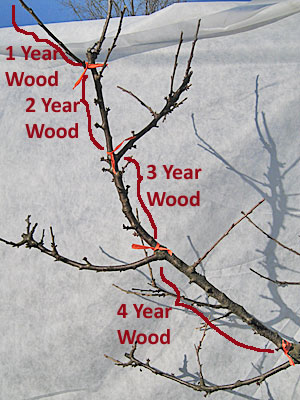
Pruning Sweet Cherries
One important note: always prune cherries when you will have at least 2 days of dry weather. This can help reduce canker. Most people grow sweet cherries as freestanding ‘bush’ shaped trees. In a future post, we’ll talk about growing sweet cherries as an espalier or fruiting wall form called UFO (upright fruiting offshoot). Cherry […]
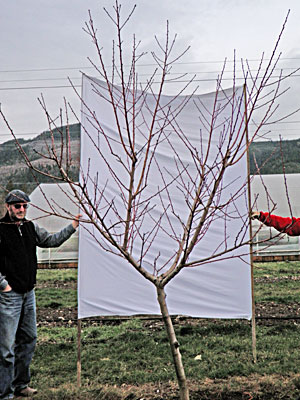
Pruning Stone Fruits
Traditionally, we have been pruning most of our stone fruits in late January along with the rest of the orchard for quite a number of years. A few years ago, we discovered something interesting in our Peach Plum. It has been my youngest daughter’s favorite plum since she was little, so we have always kept […]
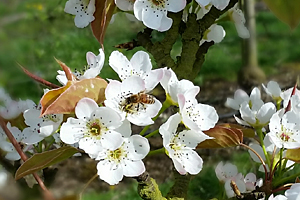
Frost and fruit buds
With our mild winter and early spring, most fruit trees are breaking dormancy a bit ahead of normal. This time of year when the forecast is for sunny days and clear nights, it’s possible we’ll get some frost. Should you worry about those fruit buds? Critical Bud Temperatures As buds begin to swell, frost damage […]
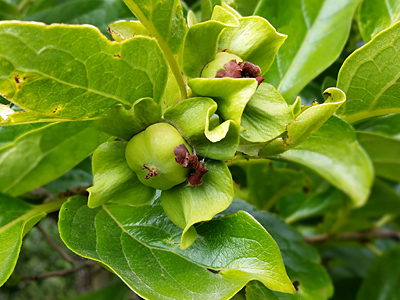
Plant of the Week- June 25
Plant of the Week- Diospyros kaki Asian Persimmon The Asian persimmon is native to China, and has been in cultivation for more than 2000 years. There are many varieties in commercial cultivation, but most of them are unsuitable for the Pacific Northwest due to their need for summer heat. Most Asian Persimmons require long, fairly […]
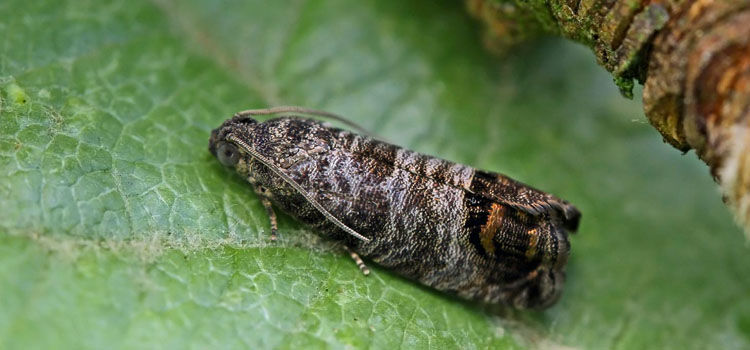
Pest Alert
Codling Moth Alert One of the consequences of this year’s unusually warm spring and early summer- pest issues are cropping up earlier than we’ve ever seen them. Most years, we watch our heat units and degree days to properly time a spray for codling moth, one of the common little pests that bores into apples […]
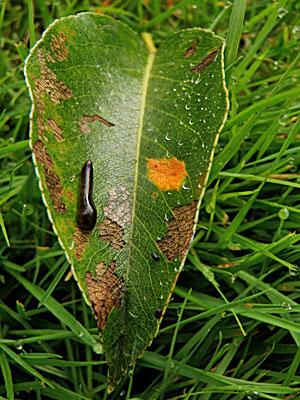
Pear Trellis Rust
This is a fairly recent disease in Whatcom and Skagit counties, but recently has been showing up with increasing frequency. Because of the accelerated spring, the spots are showing up earlier than usual this year. As with most rust diseases, this one has two host plants, fruiting pear trees and juniper (Juniperus sp.). Both must […]
